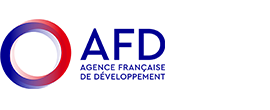Share the page
Lake Victoria: From Pollution to Water Restoration

-
When
-
From Thursday march 4 2021 to Friday march 5 2021
-
Schedule
-
14:00 CET
Lake Victoria is the second largest source of fresh water in the world. It may provide for the livelihoods of locals, but the water quality has degraded. Due to intense human activity, the water has been rendered eutrophic: that is, an abundance of nutrients have accumulated, leading to rapid growth in algae, which depletes the water of oxygen.
One of the main consequences of eutrophication is the proliferation of macroalgae and/or photosynthetic microorganisms. These blooms disturb the functioning of the ecosystem as well as its uses, such as water supply and recreational activities, in particular when the bloom-forming species are toxic.
Funded by the French Facility for Global Environment (FFEM) and co-funded by Agence Française de Développement, French and African research teams have worked for the past 4 years on the assessment of the water quality and the vulnerability of three lakes used for drinking water production in three African countries (WaSAf programme).
In Uganda, these studies were conducted on Murchison Bay and Napoleon Gulf.
Program:
Session 1 | Presentation of the main data collected during the WaSAf programme – 4 March 2021 / 9:00 - 12:30 (EAT) / 7:00 – 10:30 (CET)
Register here
Session 2 | Round tables on: What lessons can be drawn from these results in terms of risk management and ecosystem protection / restoration? – 4 March 2021 / 14:00 – 17:15 (EAT) / 12:00 – 15:15 (CET)
Register here
Session 3 | Round table on: What priorities to limit eutrophication and therefore blooms of cyanobacteria? – 5 March 2021 / 9:00 – 12:00 (EAT) / 7:00 – 10:00 (CET)
Register here
